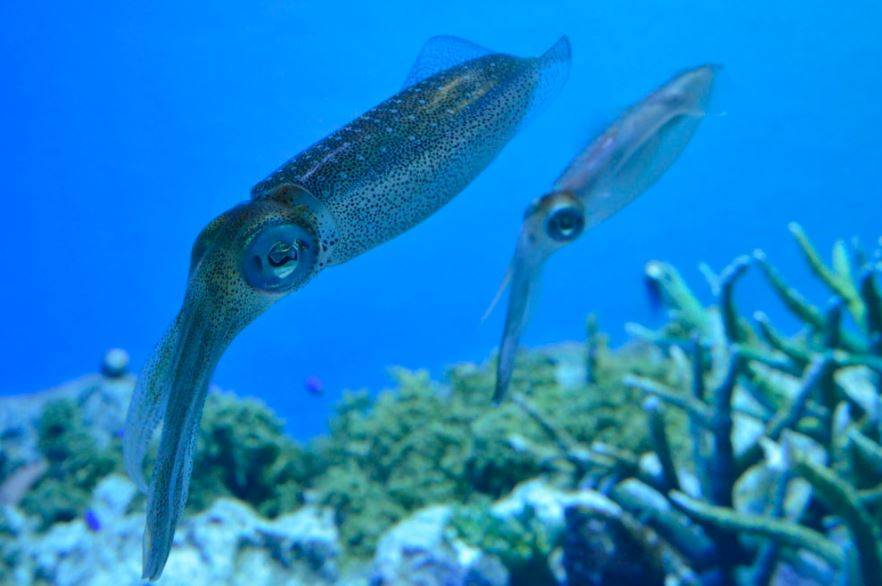
Small fish are abundant in the 200-600 m deep Atlantic water layer of the Amundsen Basin, according to a unique hydroacoustic dataset collected by the EFICA Consortium, which revealed a "deep scattering layer" (DSL) consisting of zooplanktion and fish along the MOSAiC expedition's 3170 km long track.
As a result, it came as quite a surprise when four larger fish were suddenly caught at a depth of 350-400 metres. The research team was even more surprised to discover that three of the fish were Atlantic cod, a predatory species that is not supposed to live this far north and, as a coastal fish, not in a four-kilometer-deep ocean basin more than 500 kilometres from any coastline.
The scientists also discovered that Atlantic armhook squid and Atlantic lanternfish occur much further north than previously thought using a deep-sea camera deployed beneath the sea ice.
The Atlantic cod came from Norwegian spawning grounds and had been living in Arctic water temperatures (-1 to 2 degree Celsius) for up to six years, according to laboratory analyses. The fish preferred the Atlantic water layer, a slightly warmer (0-2 degree Celsius) water mass that extends deep into the Arctic basin between the surface and deeper water layers that are below zero degree Celsius.
New Insights:
Thus, the study introduces a new trophic level into the pelagic food web of the central Arctic ecosystem: large predatory fish and squid. Along with the smaller fishes in the DSL, the continuous migration of larger Atlantic fish contributes to potential food for mammals because seals and walrus can dive to the Atlantic water layer.
"The presence of small and even larger fish in the Atlantic water layer may explain why seals, walruses, and polar bears can be found all the way to the North Pole. Both fish and mammals are scarce, but they exist "Dr. Hauke Flores of the Alfred Wegener Institute is a biologist.
The new research also discovered that diel vertical migration of the DSL is absent during the polar night, which is half a year of continuous darkness (DSL at 100-250 m), and the polar day, which is half a year of continuous light (DSL at 100-250 m) (DSL at 300-500 m). This implies that, in comparison to all other oceans, the carbon flux from shallower to deeper water via daily vertical migration of the DSL is hampered in the Central Arctic Ocean.
"During the short productive season of the polar day, the DSL will remain in the deeper part of the Atlantic water layer 24 hours per day, even when the sea ice melts, because this process is regulated by the availability of light," explains Pauline Snoeijs Leijonmalm.
No harvestable fish stocks
Based on their scientific findings, the authors of a new paper published in Science Advances conclude that there are no harvestable fish stocks today or in the near future, at least in the Eurasian Basin.
"This was to be expected given the Central Arctic Ocean's low nutrient concentrations and biological productivity. Even if more Atlantic fish and their prey are advected with the water inflow from the Atlantic Ocean, the Central Arctic Ocean ecosystem's capacity to support larger fish stocks is undeniably limited "Pauline Snoeijs Leijonmalm says
Pauline Snoeijs Leijonmalm emphasizes the critical importance of providing this fragile but fully functional ecosystem with robust international protection akin to Antarctica.
"This agreement prohibits commercial fishing for at least the next 16 years and puts "science first," requiring scientific assessments of the status and distribution of potential fish stocks in the Central Arctic Ocean and the ecosystem that supports them -a wise political decision and a good start toward full protection," says Pauline Snoeijs Leijonmalm.
(Source: Stockholm University)
















